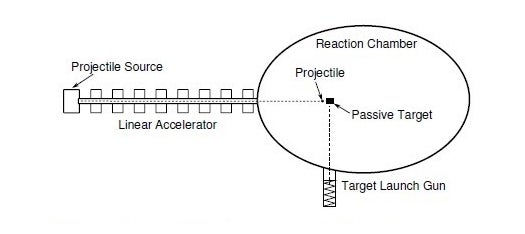Diamond Bullet Fired at 1000 Km/S Could Produce Nuclear Fusion, Chinese Researchers Say
A millimeter-sized diamond bullet fired from a linear accelerator could produce nuclear fusion when it collides with a chunk of...

A millimeter-sized diamond bullet fired from a linear accelerator could produce nuclear fusion when it collides with a chunk of solid methane, according to a study by Chinese researchers.
Despite the large amount of energy required to accelerate a diamond to 1,000 km/s — about 620 miles per second — the collision produces a net energy gain, according to the team’s simulations.
So far, it’s just a concept that exists in computer simulations only; no physical studies have been conducted. Only the initial impact and ignition have been studied in detail, and the simulations stop at roughly 50 nanoseconds. So no one should be holding their breath for diamond bullets powering Beijing anytime soon.
The system would work by colliding a 1-cubic-millimeter diamond with crystal DT methane, which has better stopping power than other fusion fuels. Most of the bullet’s kinetic energy is transformed into a shock wave, producing high pressure and temperatures.
The collision’s peak energy is 4 petawatts, at a rate of 1.5 petawatts over 40 nanoseconds. That’s four quadrillion watts. About 80 percent of that energy is wasted in the form of scattered neutrons, but the remaining electrons and radiation are enough to heat things up to fusion temperatures, the paper (PDF) says.
The team says their algorithm is not advanced enough to progress much past the ignition phase. But fusion blogs have been abuzz lately, with one writer speculating that the energy would be even greater if the diamond bullet reaches faster speeds.